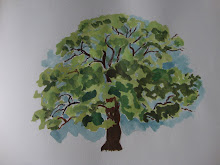
Movie viewing, these days, is a different experience altogether .
Obviously in half a century there are bound to be changes!!!
But it was fun when I did go with our lady Friday in a cycle rickshaw to the theatre and watch a mythological movie. Later there were days when we kids bundled into our old Prefect Ford and drove off to watch a Laurel Hardy film. Or by bus to watch Jerry Lewis or Three Stooges. We stood for hours in the queue. The queue for the ladies was generally shorter and I was sent to buy the tickets. There was no air conditioning and the seats were hard, yet we never complained of the heat or the seating. It was all worth it for three hours of entertainment. There were bugs too for company.
The names of the theatres were also rather quaint - we had Regal, Embassy, Light House, Picture House, Minerva, Plaza, Tivoli and so on.
English movies arrived in India almost two years after they were released abroad. Some of them were even screened at the school. The auditorium would be darkened and a temporary screen set up or at times the large wall served the purpose. We would troop in and sit on the carpet that would be spread on the floor, no chairs, so that more numbers could be accommodated . Viewing movies at school was 1/10 the cost of going to the theatre. Parents were more than willing to let us go and watch these films. I remember Lassie was one of the movies I watched at school.
Once a year we all were packed into buses and taken to a theatre. If we were lucky, it would be a special screening only for the school. If the theatre was close by , we had to walk in twos and a teacher would bark if we moved out of line. We went for Sound of Music, Born Free and many more.
The show invariably started with a news documentary. Those were the days we had just the radio. So we watched the news in action. This was followed by two or three trailers of forthcoming movies. And then the actual movie. An audible gasp - when the censor certificate indicated the number of reels of the movie. And then we would settle down to watch. At times, there would be a pause between reels resulting in an unscheduled intermission . This occurred as there was only one print of the picture sent to each centre and therefore, the timings in different theatres were staggered to allow the transportation of the reel from one theatre to another. These unscheduled pauses were greeted with hooting and whistling.
We also had a friend of my father, who was probably one of the few people of that era to have had a home theatre. Primitive one by present standards. It was the same old projector with reels and a screen and speakers. It would be hauled to different locations in the house, and on a clear summers day, we would watch Elizabeth Taylor in National Velvet, seated in the open terrace of their home. The men had their drink, the women and kids had to make good with lime juice. We were also served delicious home made snacks.
The first real change came with the introduction of the 70 mm theatre and the first movie screened there was The Sound of Music. The theatre was air conditioned and had better sound systems. It belonged to a well known actor and he had his huge portraits all over the place, rather garish. But who cared.
Soon some of the old theatres were thus renovated and airconditioned, others gave way to malls, some were converted into what are called ‘function halls’, they made more money renting out the place for weddings.
And this went on till a few years ago, when the multiplex era started in India. Soon we had our very own with an Imax screen. The tickets were priced almost 3-4 times that of the other theatres and the initial reaction was that it wouldn't last. Who will pay close to 100/- Rs for a ticket?!! Initially out of curiosity people did go, but after that most felt it was a cool place to hang out. I mean, you also had places to shop, places to eat, never mind they were as expensive as the tickets. One multiplex led to another and each more expensive. The latest multiplex in our city has lazy boy type of seats to recline and watch in comfort.
We have an advantage, one of the multiplexes is situated close by. And it is a small walk. Tickets can be booked online for a price. Walking meant that one did not have to search for a place to park, and we could shop around, eat at the food court ,watch the movie and come back home. Nice plan. But as luck would have it, for the occasional movie-goer, it was a big let down when the movie did not meet our expectations and then you wondered whether all that expenditure was worth it!!
The younger one and her friends, last month, could not get tickets for a movie at the multiplex, and they rushed to one of the older theatres where they found tickets readily available. They watched the movie, ate the popcorn and had a coke and came back all happy. As one put it , they did not spend much and therefore did not feel cheated that the movie was not as good as the review.
Last week, she came home again and we planned a movie which did not get any rave reviews but had a good star cast. They decided that they would see it at the ‘new’ theatre they had discovered and roped me in. The theatre was just across the road from office, and I played hookey for three hours. The movie was worth the cheaper ticket. Yet, it was a long time since I had been to these theatres. The seats were hard. There was no leg space, (I am complaining !!)almost like travelling in the new low fare-no frills - aircraft . The crowd was noisy. They heckled and hooted for other reasons. And it was not digital, so we knew when each reel ended and the other started. And somewhere along we had just the audio without the video!!
So much for the experience.
I shall stick to the multiplex for the two movies that I watch annually. The rest of the movies, I shall watch on the small screen in the comfort of my home.



